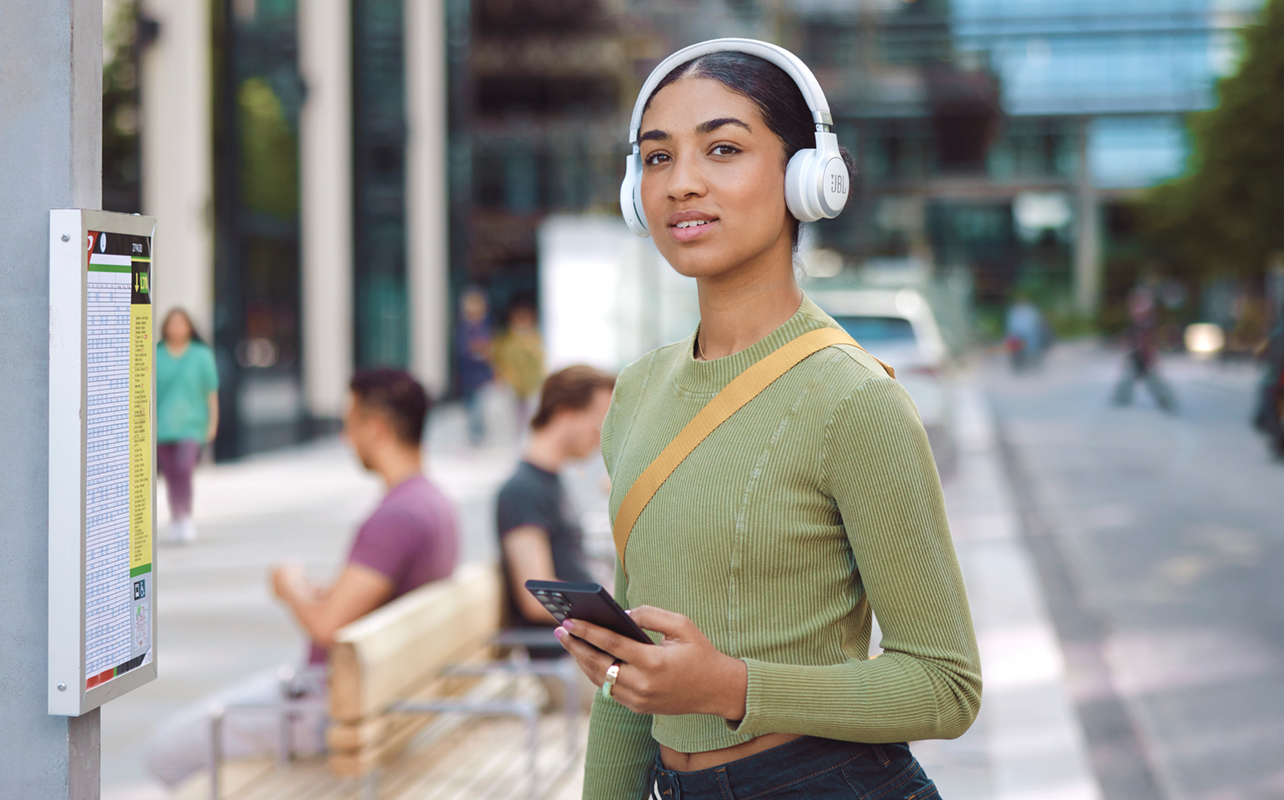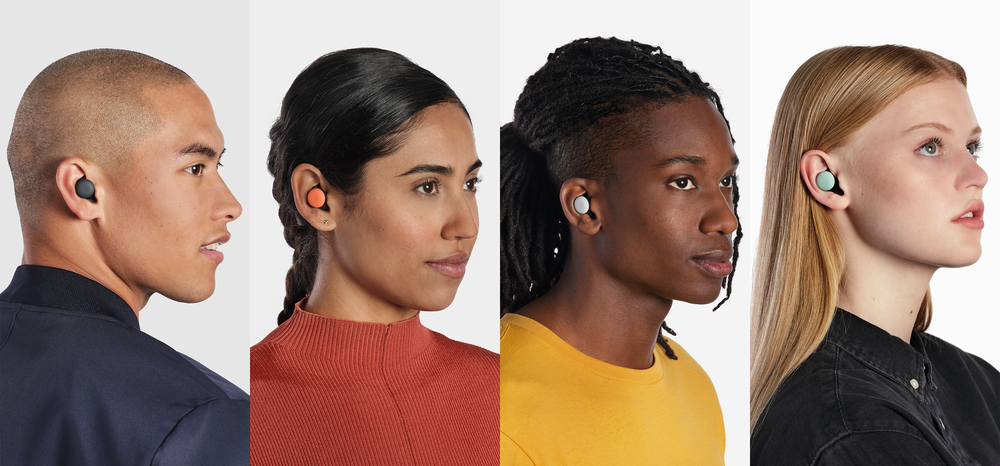
It’s 10 p.m., and your dorm hallway sounds like a food court. You’re trying to review flashcards while someone’s watching TikToks at full blast. Let’s face it—student life is noisy. The right headphones could change everything.
Campus life is a constant soundtrack between clacking keyboards in the library, late-night dorm chatter, and back-to-back Zoom labs. Headphones have quietly become a student’s Swiss-Army tool: they carve out a pocket of silence when you need focus, amplify your voice in online courses, and slip seamlessly from lecture notes to gym playlists. In fact, surveys show that more than 7-in-10 Canadian undergrads now study with headphones on at least part of the day, citing productivity and stress relief as the top reasons.
The benefits of headphones for students are very practical. There are 10 of them, in fact, all of which can boost your grades, reduce stress, and make everyday life easier. Plus, a quick 60-second checklist to help first-time buyers choose with confidence.
1. Block distractions for deeper focus
A powerful benefit for students is the way headphones can tune out distractions—especially in shared environments like dorms, coffee shops, and open libraries. Headphones with Active Noise Cancellation (ANC) use tiny microphones to detect and cancel out background noise. Well-sealed over-ear models combined with ANC can reduce ambient sound by 20–30 decibels, creating a much quieter space to concentrate. A 2024 classroom study found that students using ANC headphones completed reading-recall tasks 18% faster than peers without them. Chatty roommates or a loud ventilation fan can get in the way. Cutting out the noise makes it easier to retain what you’re reading.
Want to know more about how noise-cancelling headphones can improve focus? Check out our full article: Studying with headphones: Does noise cancelling help focus?
2. Speak clearly in online classes and group calls
Online learning isn’t going anywhere. In 2024, 40% of Canadian students experienced at least one fully online course. That means your audio setup matters. Headphones with beamforming microphones and AI-powered noise suppression reduce background noise like typing, fans, or talking roommates. Your voice needs to come through clearly during group projects, lectures, or presentations. Mic quality is a necessity if you’re logging long hours on Zoom or Teams.
3. Listen longer, not louder—protect your hearing
It’s easy to turn up the volume when you’re trying to drown out noise, but that can damage your hearing over time. The World Health Organization recommends keeping volume below 60% and taking listening breaks. Noise-cancelling headphones help you follow this rule by blocking ambient sound so you can moderate volume levels. On average, students using ANC can reduce listening volume by 10 decibels compared to those using regular earbuds in noisy spaces. Your ears will thank you over the course of your degree.
4. Lower stress with lo-fi beats and mindfulness
Studying isn’t just about focus, it’s about managing stress. Music with a tempo of 60–80 beats per minute, like lo-fi hip hop or ambient soundtracks, can help reduce cortisol levels during exam season. There is science behind this. The benefits of headphones for students, especially noise-isolating ones, let you immerse yourself in calming sounds—be it white noise, binaural beats, or guided meditations. Try apps like Headspace, Calm, or Apple Fitness+ for short mindfulness sessions before a big test. A calmer mind is a sharper mind.
5. Keep calls and voice notes private in shared spaces
You’ve probably taken a group call in a library or sent a voice memo while walking to class. Good headphones ensure your conversations stay private and respectful of others around you. Built-in sidetone monitoring (which plays your own voice back to you in real time) also helps prevent accidental shouting. No more getting weird looks in the café for talking too loud. It’s a simple but underrated advantage of headphones for studying and collaborating on the go.
6. Enjoy dorm-friendly cinema and gaming
Love movie nights or gaming after class? Spatial-audio formats like Dolby Atmos and Sony’s 360 Reality Audio make headphone listening feel surprisingly immersive. You get that “cinema surround sound” experience without waking your roommate at midnight. Many headphones also offer night mode EQ settings, which reduce harsh sounds like explosions or jump-scares while still delivering clear dialogue. Perfect for decompressing after a long study session.

7. Power through commutes and weekend trips
Whether you’re heading home between semesters or just catching the campus shuttle, headphones make travel smoother. Quick-charge tech gives you three hours of playback from just plugging in for 10 minutes—enough for two lectures and a bus ride. Wireless headphones and earbuds are especially handy on the go, sparing you from tangled cords and letting you move freely through busy terminals or packed buses without a wire getting caught in the mix. Plus, transparency mode (on many ANC models) lets you hear surrounding noise like traffic or announcements without taking your headphones off. It’s the best of both worlds: awareness and focus.
8. Crush workouts and intramurals
Gym sessions and study breaks go hand-in-hand. If you’re hitting the treadmill or joining intramurals, you’ll want sport-ready headphones that stay put and stand up to sweat. Over-ear headphones rarely have IP dust and water resistance ratings, unlike wireless earbuds, which usually do. Take care of your headphones after sweating in them and they’ll be sure to last.
Look for:
- IPX4 or higher water resistance
- Secure-fit designs like ear hooks or winged tips
- Quick pairing for grab-and-go workouts
Examples like the Beats Powerbeats Pro 2 or JBL Endurance Peak 3 (IP68 rated) are great for everything from burpees to jogs around campus.
9. Create a sensory safe-zone for neurodiverse learners
It’s worth exploring the benefits of headphones for students with ADHD or autism, who often find loud or unpredictable environments overwhelming. One of the most overlooked advantages of noise-cancelling headphones is their role in reducing sensory overload. By filtering out constant background noise, these headphones help neurodiverse learners stay calm, focused, and more comfortable. Pair them with tools like weighted blankets or fidget apps for a complete sensory toolkit. Everyone learns differently and the right headphones can support that.
10. Boost language learning and creative projects
Headphones aren’t just for blocking noise, they’re also for tuning into detail. Language learners benefit from clearer audio, especially when practicing pronunciation or listening to dialogue. High-quality headphones with a strong mid-frequency response help you pick up nuances in accents, tone, and rhythm. They’re also a huge help when editing podcasts, audio assignments, or music projects. Whether you’re in French 101 or final-year media studies, good sound matters.

Quick buying checklist
Before you dive into the Best Headphones for back to school guide, here’s a quick-reference checklist of features to look for:
| Feature | What to look for students | Why it matters |
|---|---|---|
| ANC type | Hybrid or adaptive ANC + transparency toggle | Switch between deep focus and awareness |
| Mic design | Beam-forming or boom mic with sidetone | Clear voice for calls and class participation |
| Battery life | 30h (over-ear) or 6h + 24h (earbuds). Quick charge: 10 mins for 3h | Full-day use with emergency backup |
| Comfort | Under 275g with memory foam pads or ventilated pads | Stay comfy & prevent fatigue through long sessions |
| Connectivity | Bluetooth 5.x + 3.5mm or USB-C | Reliable pairing, even in exam rooms |
| Durability & rating | IPX4+ rating, folding design, hard case | Withstands backpacks, bad weather & gym sweat |
| Budget range | Under $150 (entry), $150–$350 (mid-tier/ANC), $350+ (flagship) | Find your fit without overspending |
Frequently Asked Questions
Q1. Does active noise cancellation make it unsafe to walk around campus?
No. Most modern ANC headphones offer a transparency mode that pipes outside sounds back in. Activate it whenever you cross streets or wait for announcements, then switch to full noise cancelling in libraries.
Q2. Are wired headphones still required for exams?
Usually yes. Many Canadian universities ban Bluetooth devices in proctored rooms. Pack a simple wired pair (3.5 mm or USB-C) that works even if the battery dies.
Q3. How much battery life covers a full class day?
Aim for 30h on over-ears or 6h per charge on earbuds plus a 24h case reserve. A quick-charge spec such as “10min = 3h play time” covers last-minute dashes between labs.
Q4. Will headphones really help me focus in a noisy dorm?
Yes. A 2024 study found students wearing ANC finished reading tasks 18% faster and showed lower physiological stress than peers without ANC.
Q5. Do headphones benefit neurodiverse learners?
Absolutely. Educators recommend noise-cancelling models as part of sensory toolkits to reduce overwhelm for autistic and ADHD students, improving comfort and concentration.
Smart sound, smarter studying: Your next move
The benefits of headphones for students aren’t just about music, they’re tools for learning, privacy, focus, and wellness. With so many affordable and powerful options out there, the right pair could be the smartest back-to-school investment you make.
Ready to find your perfect fit? Browse top-rated student headphones and level up your study game today.
This article was drafted using AI technology and then reviewed, fact-checked, and revised by a member of our editorial team.





